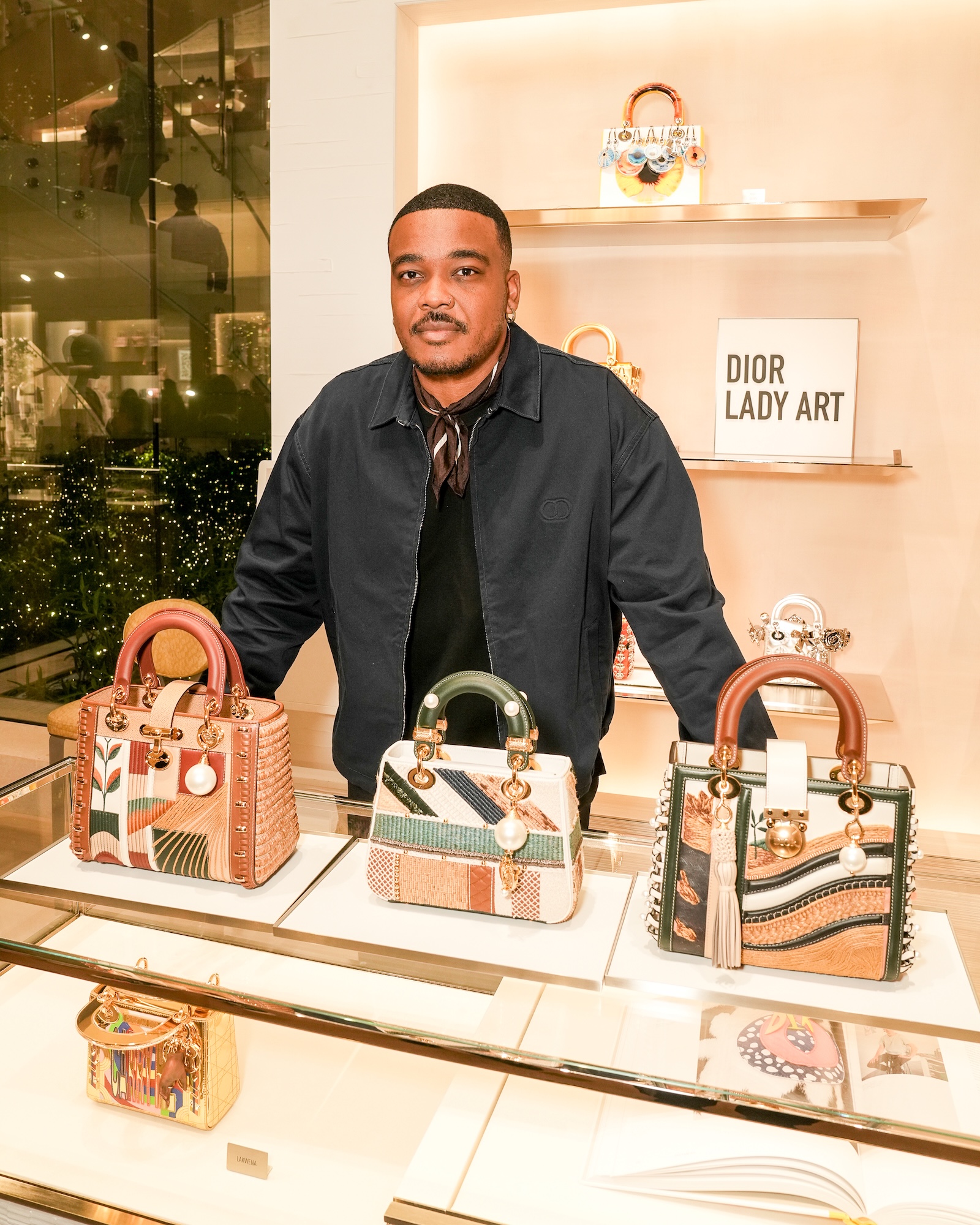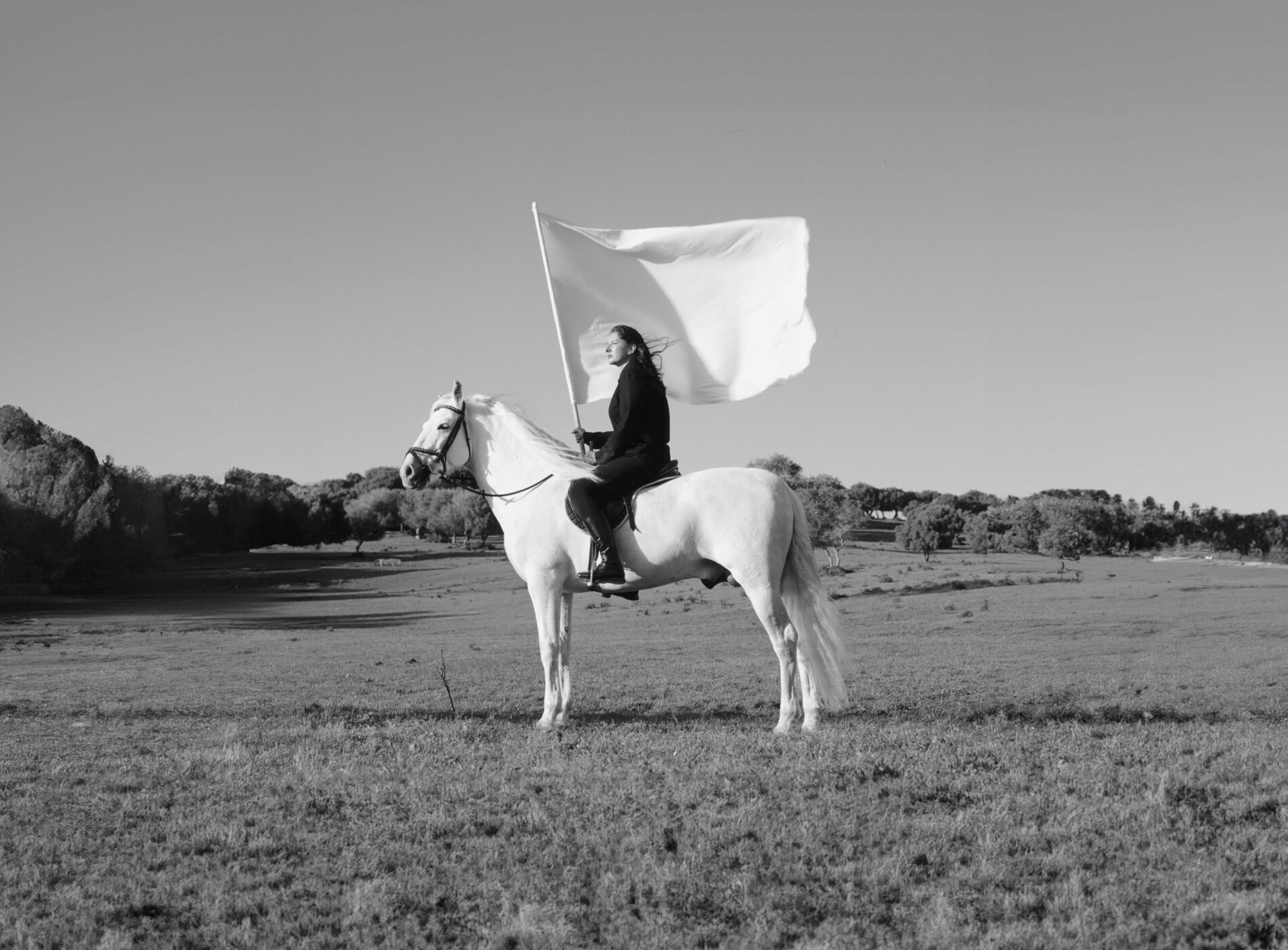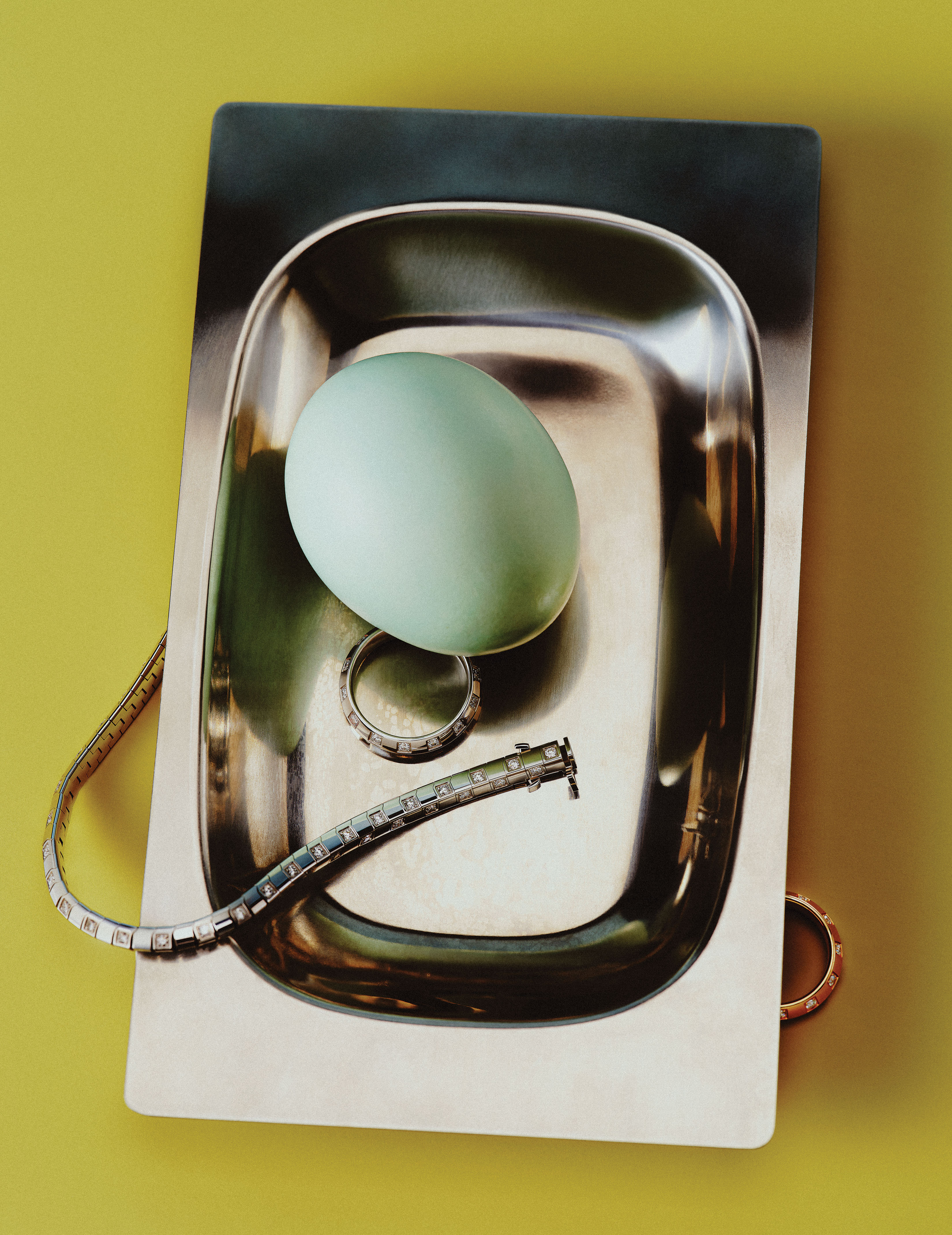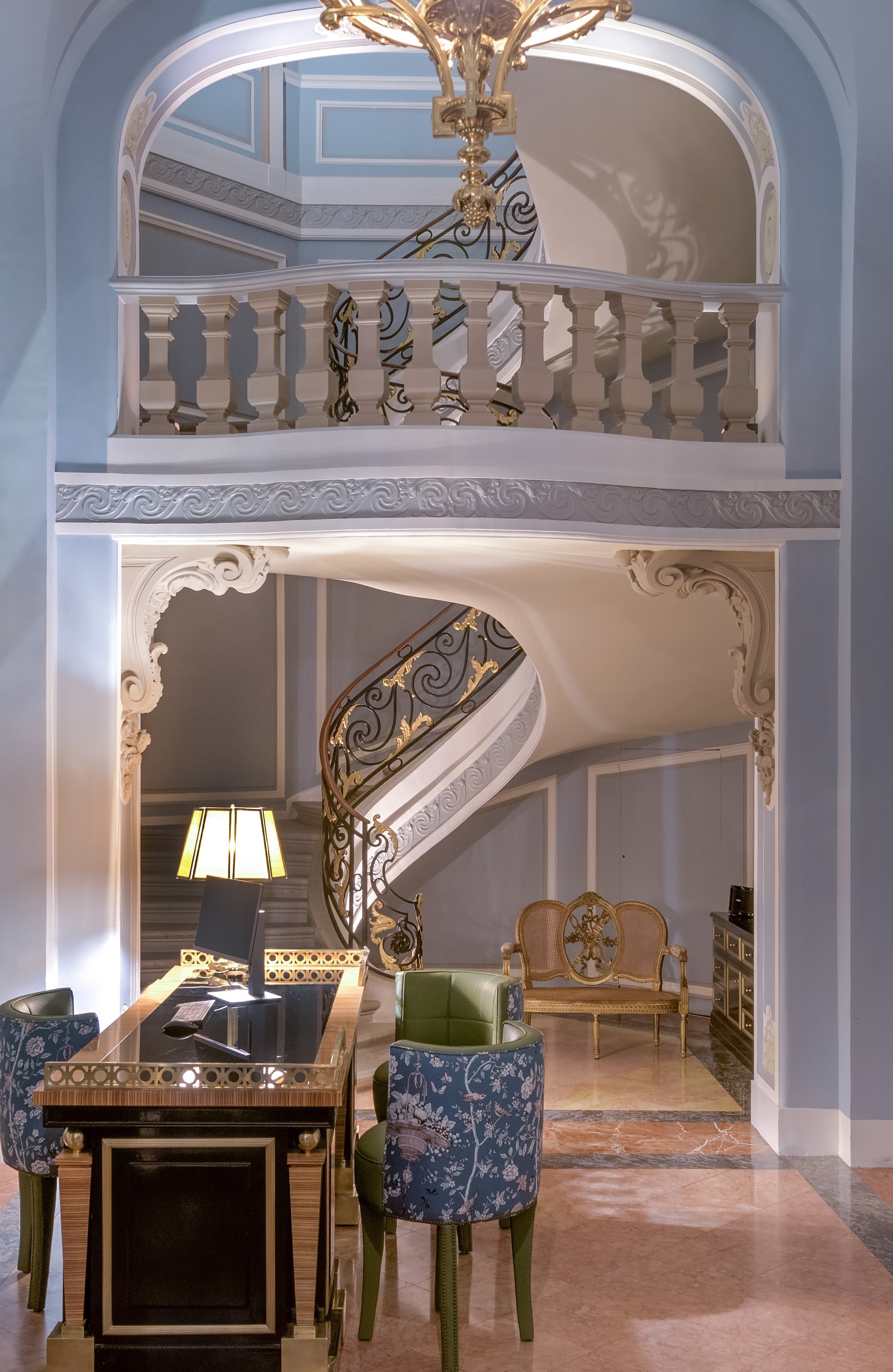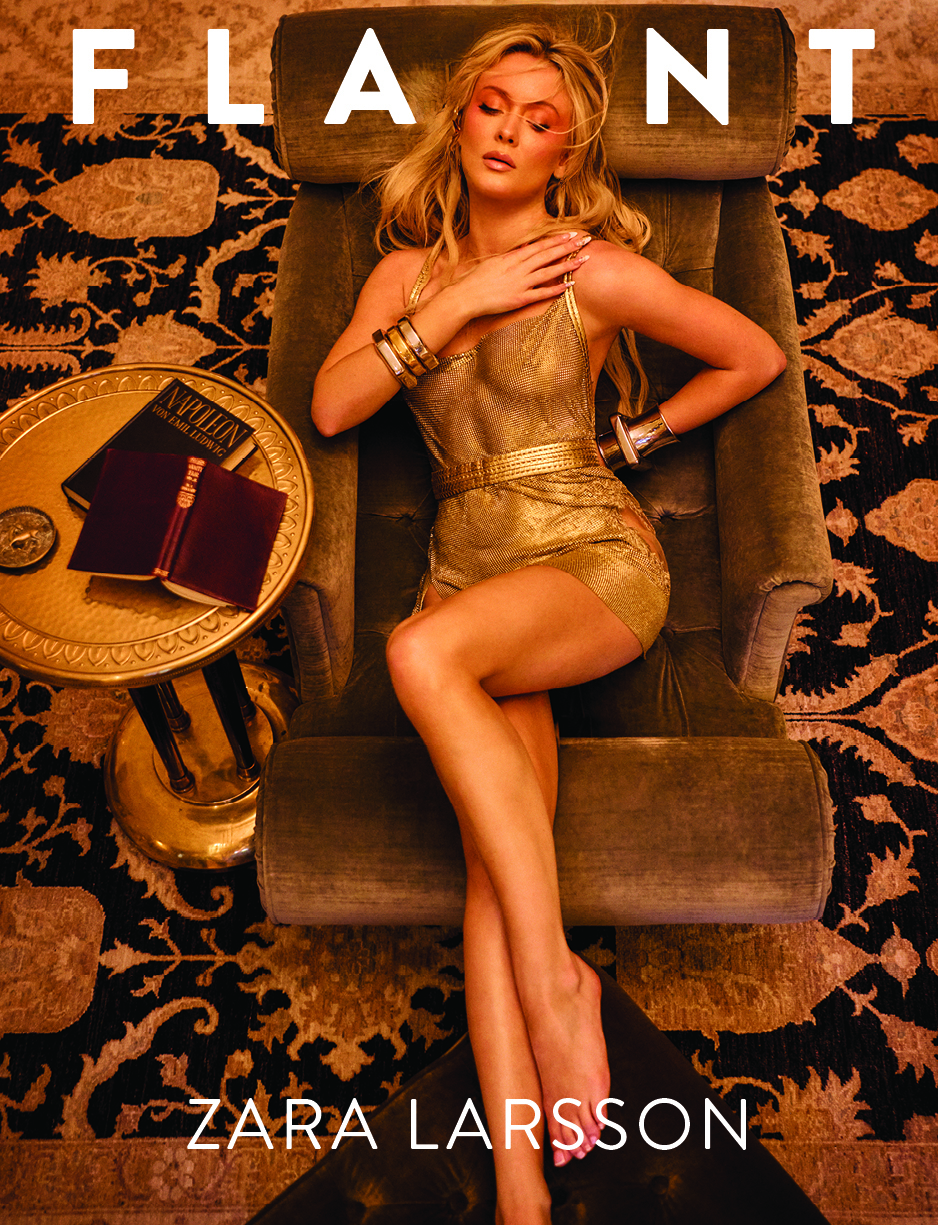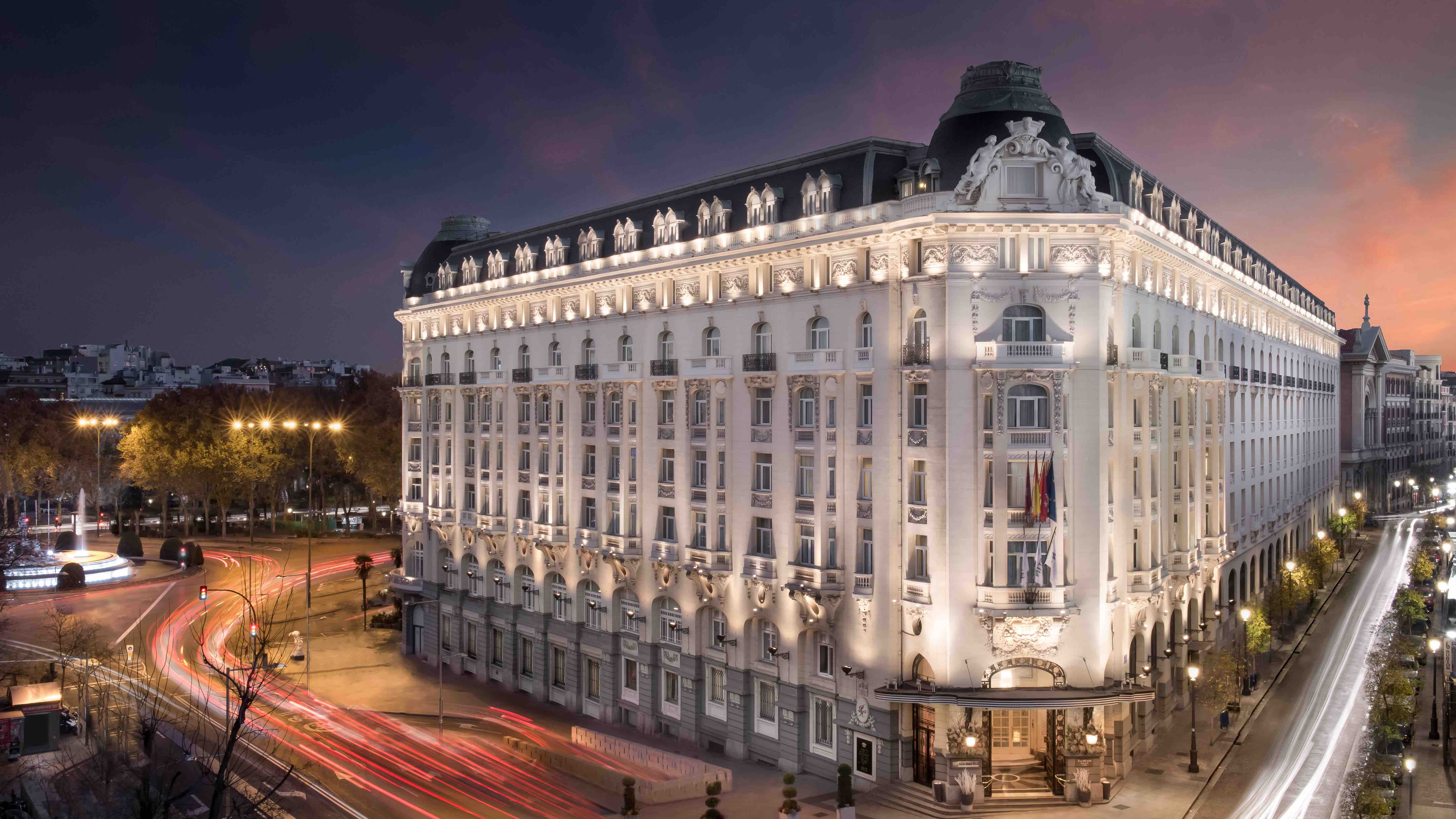

New York based brand Delaroq creates beautifully crafted accessories that look contemporary and feel timeless. The brand was created by Jennifer Lyu as a way to reduce and simplify, sustainably designing collections that utilize upcycled and recycled materials. These elegant designs are more than just looks: they’re functional, affordable, and the minimal design reduces pollution and can endure years of use.
_Flaunt_ had the opportunity to talk to Delaroq founder Jennifer Lyu about her latest collection, The Troisième Series.


**When did you fall in love with fashion?**
This is such a delightful question, because I fall in love with fashion continuously.
I first fell in love with fashion at a very young age, but I didn’t allow myself to pursue it with any serious interest until after I had earned a ‘proper’ university degree in political science in New York. I originally wanted to do environmental work on an international scale.
This was probably somewhat cultural because as a teenager in California, the whole concept of a career in fashion, let alone, the fashion industry felt abstract, and out-of-reach. Once I landed in New York, I was surrounded by so many different expressions of personal style. It was only then that I could really see that a career in fashion was not at all a fantasy, but a real industry in which I could partake.
Shortly after I graduated from Barnard College, I made a hard career pivot and went to Polimoda in Florence, an experience that changed my life and allowed me to travel around the world. To date, I’ve lived and worked in Italy, France, and the U.S. My career in fashion has granted me the gift of travel throughout Europe and Asia which furthered my love of fashion.


**What has your journey been like so far?**
My short answer is winding and wondrous. My long answer is full of relocations, realizations, and recalibrations. As I gain more experience in my life, I have learned to lean into the curves of every twist and turn, meaning that I learned to appreciate all of the departures from the beeline path that I initially thought my career would take.
Cultivating a willingness to embrace the unknown and to recalibrate your approach are key components to resilience. This nimbleness has been a grounding foundation to some of my biggest breakthroughs.
In terms of the work that I’ve been able to do and the objects that I’ve been able to make, I enjoy the challenges of designing across a variety of materials and products—knits, wovens, leather—clothing, outerwear, shoes, and accessories.
My career has led me to design luxury goods for well-known brands such as: Louis Vuitton, 3.1 Phillip Lim, Prada, Roberto Cavalli, and Tory Burch but I’ve also designed for mass-market companies too. While the latter might not seem as glamorous, that range of experience introduced me to a wide variety of customers, which in turn allowed me to think on a very grand scale. This enabled me to consider many types of needs and able to design products that serve all sorts of everyday lives.
What’s been the most important lesson that you’ve learned in your career working at various fashion houses?
If you had asked me this question at different points in my career, the answers would have varied. Early on, I would have told you that learning about the history of luxury materials and the heritage of particular brands was a rich education—and that remains true.
Right now, what I am realizing is that when working with such high-end designers, especially those affiliated with luxury, you really start to understand how to design something iconic. After all, when one thinks about some of the best-designed goods in the world—people hang onto them. Great design is not disposable. Not disposable is sustainable.
So as I think about what I want to contribute to both the field of design and to the environment, I realize that I have the experience to bring that level of craftsmanship to a much wider audience. I can make accessories that look great, meet all of my customer’s functional needs, _and_ empower them to shop in alignment with their own personal values.


**When did you come up with the idea for _Delaroq_?**
Delaroq—a playful linguistic take on “de la roche” (trans. “from the promontory’)—was born out of a rude awakening. While visiting luxury leather suppliers in Asia, I encountered warehouses full of offcut leathers. These leftovers were going to waste, literally rotting away.
This stark reality gave me pause. It incited me to really reflect on my own role in the design process, and forced me to question what choices I could make to leave the world a better place for my son’s generation. Forming Delaroq gave me the ground to reframe how I thought about all of the resources and ecosystems that were being impacted by production and consumption.
My first instinct was to try to find a way to get more use out of the leftover material. My next instinct was to try to design timeless pieces that people would use often, repair if needed, and want to keep.
As time goes on, we continue to research solutions that insure a healthier future for all species – whether that means making products that endure or preventing pollution and waste along the way. We take a lapidary approach to problem solving at both the level of each design and within the wider scope of the company's vision.
I am also segueing the idea of upcycling to also include recycled materials such as eco nylon made from water bottles, water based PU and the possibilities are more accessible than previous years.

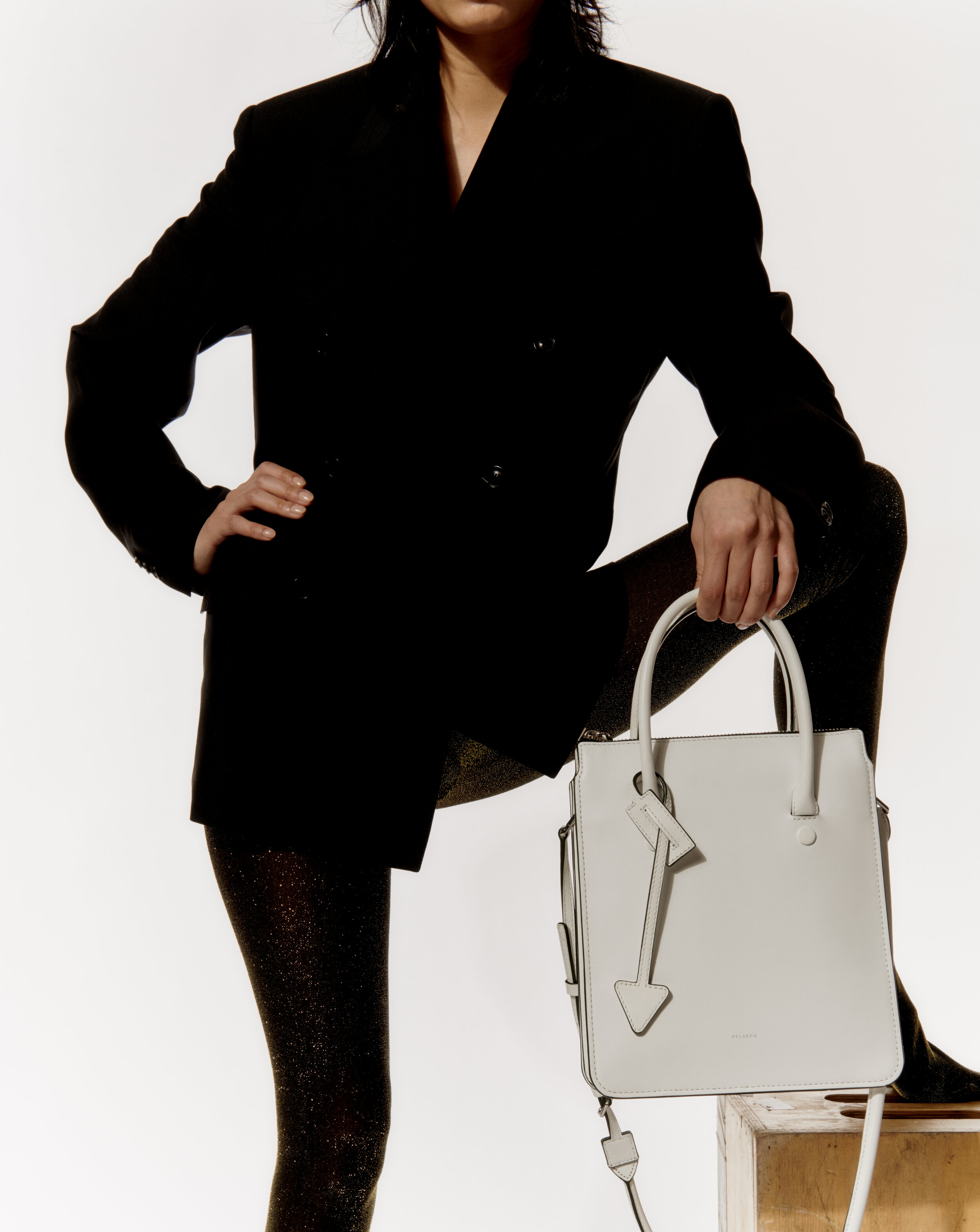
**What has inspired your collections?**
The enthusiasm for our initial _Troisième Collection_ was really encouraging because we learned that our customers really valued the gender-neutral combination of minimal design and maximal functionality. They came back to us and asked for a larger bag that would bring the same level of style and quality of craftsmanship, but could serve more of their daily needs—going from the gym, to work, and then to dinner with friends. Our customers are as dynamic as they are intrepid, which constantly inspires me when I’m designing for them.

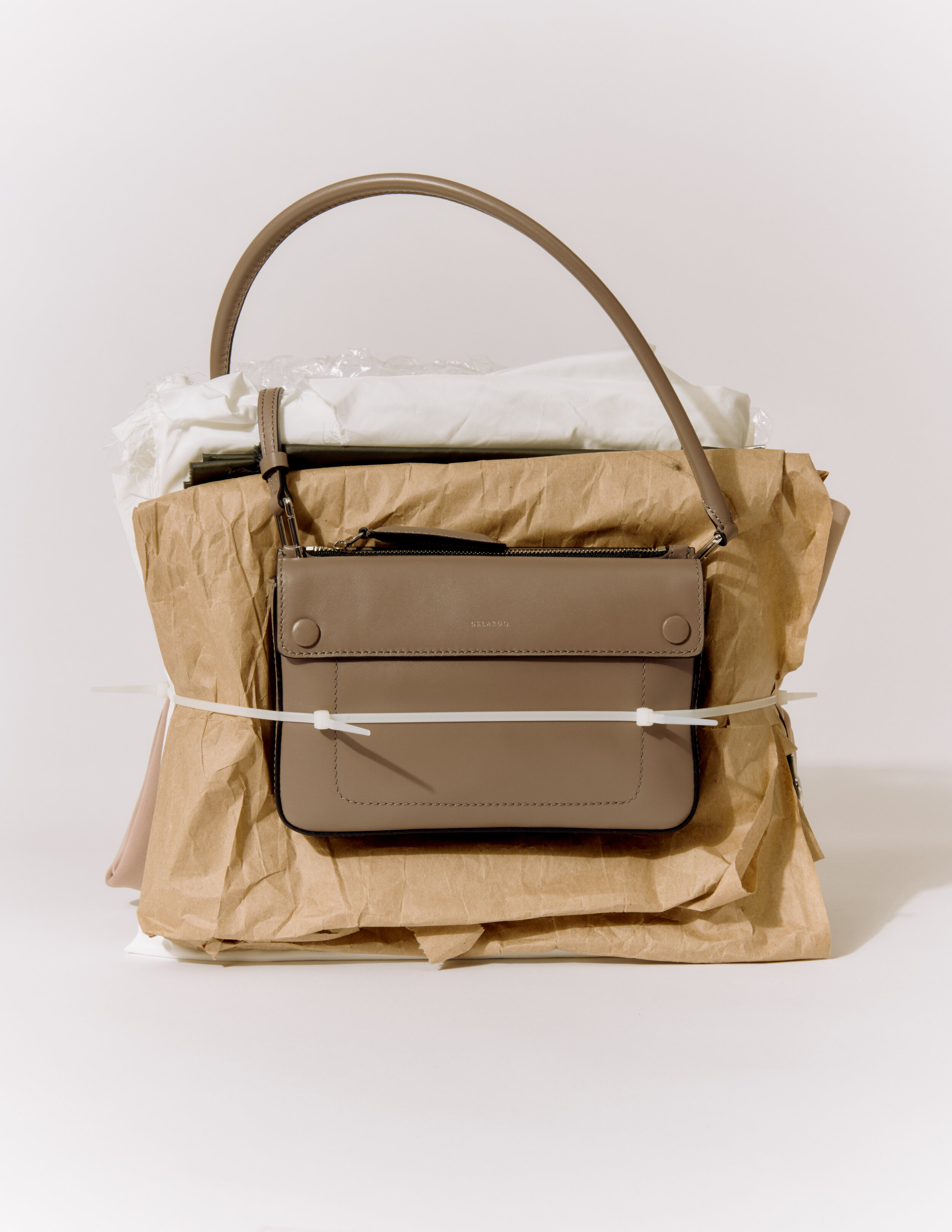
**What does it mean to you to be creating a product that is sustainably produced?**
Truly sustainable goods have to not only take into account the ecosystems that are impacted from the point of sourcing to the point of delivery, they also need to also consider longevity. Optimally, each product can incorporate both concerns—but I think those outcomes will become more likely as the textiles industry goes through a green revolution. For now, we designers must consider, how we can make products that can outlast both passing fads as well as wear and tear.
Slow food could be a great model for adapting some sort of corollary in ‘slow’ fashion.

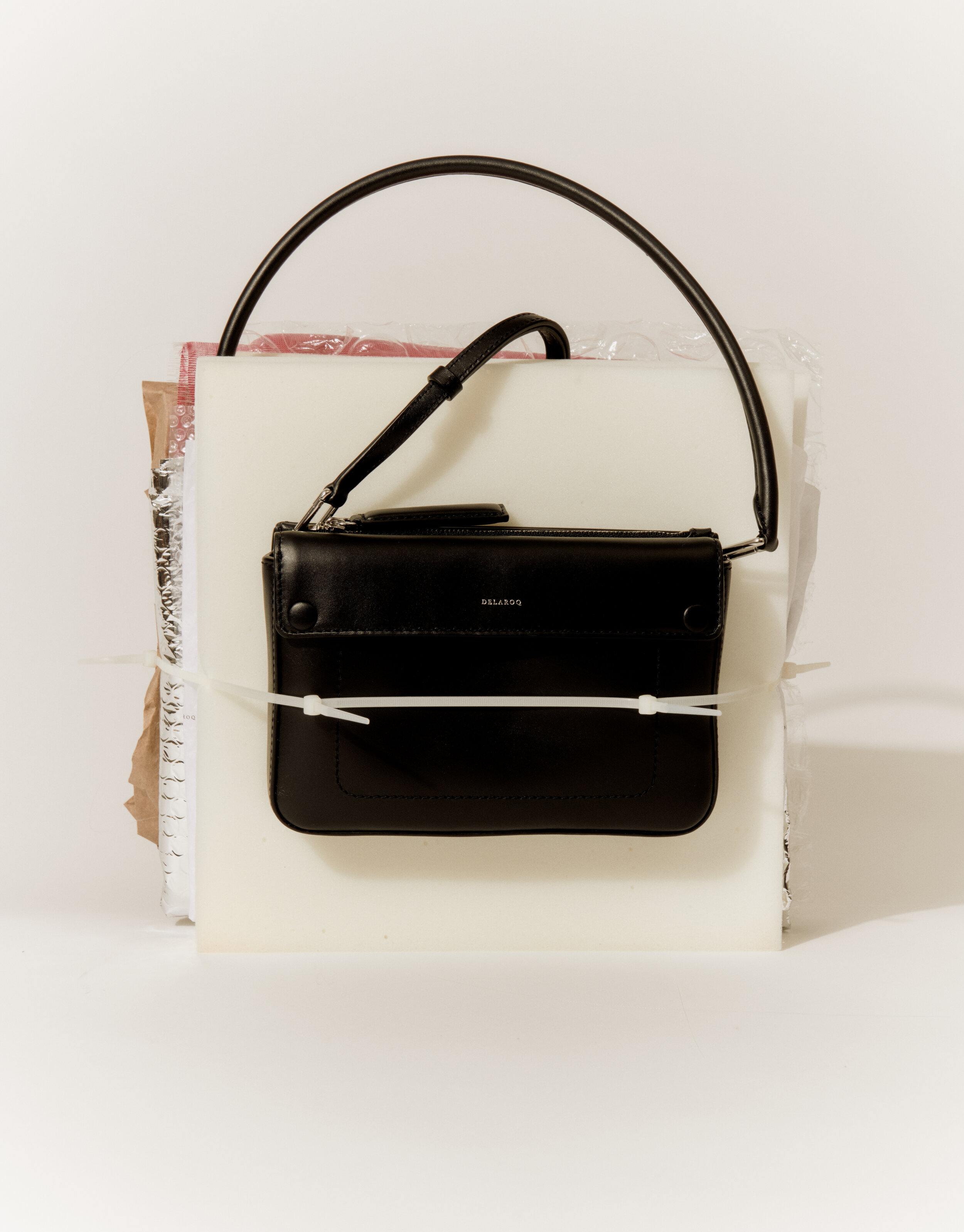
**How has your brand evolved through the pandemic?**
I think that 2020 has been a year of tremendous loss and a year of tremendous insight. Around the world, so many different types of vulnerability have been laid bare and it is now time for each of us, to show up, in all of the many ways that we can, to help rebuild and repair.
My resolve remains ecological, but I also want to help inspire and encourage a new generation of ecologically conscious designers to work towards better solutions collectively.
The next phase of our business will also consider how we can support or contribute to a wider, ecological, sense of community. Can we think about how to integrate forms of repair inside and outside of the company.
Where do you see the future of fashion growing from here?
It’s a great question. Some friends think that post-vaccine, we’re going to see a new era of excess—a new ‘roaring 20s’ of sorts. Maybe, but I’m not so sure. I’m seeing the rise of an other-centered sensibility. I’m seeing young people turn out in record numbers to vote because they’re alarmed about the disasters of climate change. I think that fashion, which offers such an immediate form of personal expression, can be a very powerful vehicle. Designers will need to respond to the values of an increasingly outspoken new generation that cares about good design but cares equally about sustainability, carbon footprints, and regenerative practices too.

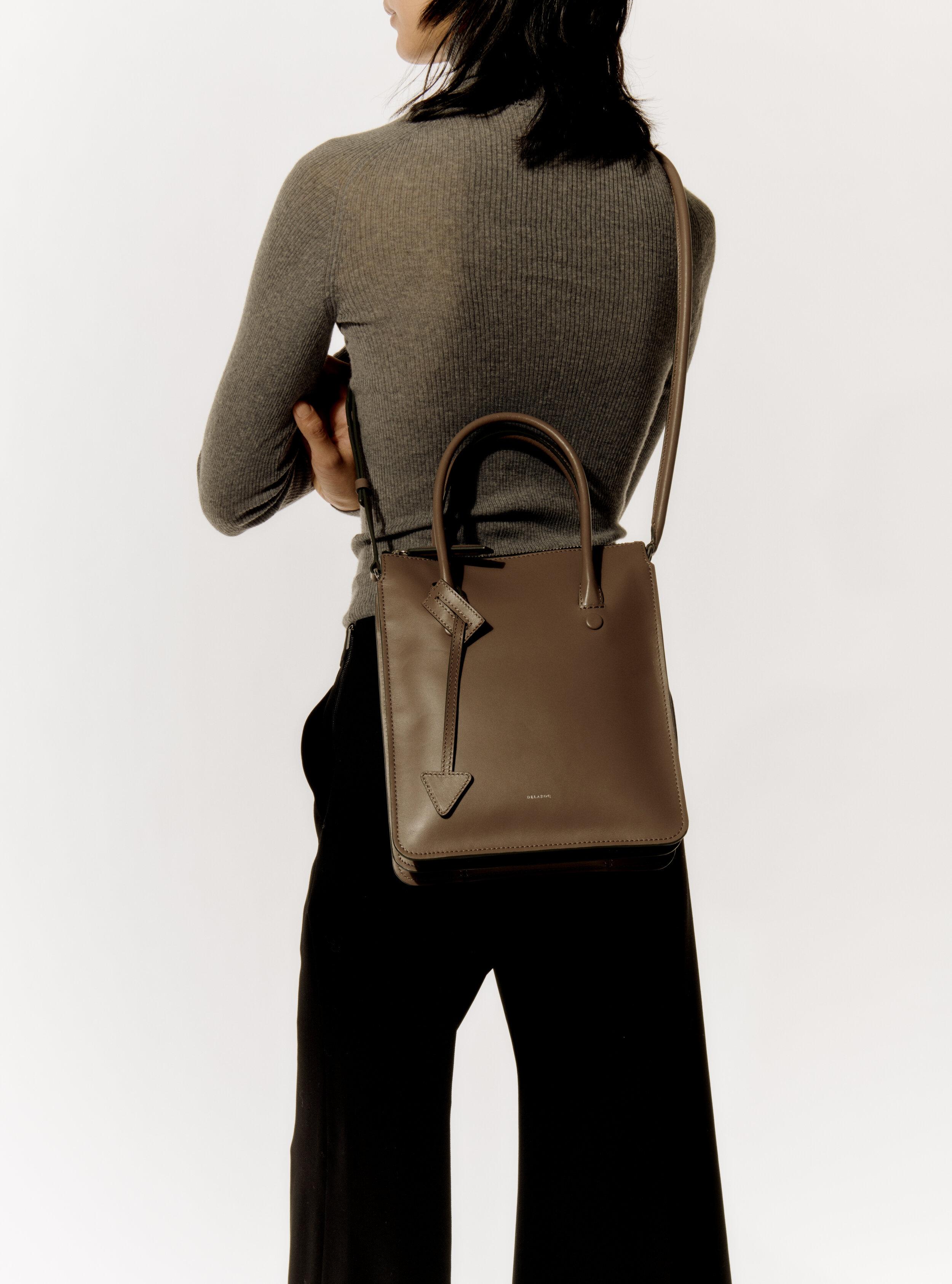
**What are some goals that you have for yourself and the brand?**
I think that any company who claims to care about the environment needs to hold their bottom line in balance with the ways that their production impacts wider ecologies. Delaroq isn’t just about making more stuff, it’s about making change.
Inclusion also matters. I grew up believing that good design and luxury were exclusively available for only those who could afford it; and by and large been the case, but we need to change that conversation.
I think that luxury should be attainable and that our thoughtfully crafted products should empower our customers. When we say “buy less, buy better,” we mean it. We’re not just designing products for one season; we’re designing products that traverse seasons and craft them to last. We designers have an immense potential to prevent waste by making goods that outlast trends.
What feels most urgent now is to think about how to make a product that functions well, looks timeless, and feels accessible.
Delaroq’s ‘secret power’ is that it looks contemporary but it’s really timeless.
 
New York based brand Delaroq creates beautifully crafted accessories that look contemporary and feel timeless. The brand was created by Jennifer Lyu as a way to reduce and simplify, sustainably designing collections that utilize upcycled and recycled materials. These elegant designs are more than just looks: they’re functional, affordable, and the minimal design reduces pollution and can endure years of use.
_Flaunt_ had the opportunity to talk to Delaroq founder Jennifer Lyu about her latest collection, The Troisième Series.

New York based brand Delaroq creates beautifully crafted accessories that look contemporary and feel timeless. The brand was created by Jennifer Lyu as a way to reduce and simplify, sustainably designing collections that utilize upcycled and recycled materials. These elegant designs are more than just looks: they’re functional, affordable, and the minimal design reduces pollution and can endure years of use.
_Flaunt_ had the opportunity to talk to Delaroq founder Jennifer Lyu about her latest collection, The Troisième Series.
 
**When did you fall in love with fashion?**
This is such a delightful question, because I fall in love with fashion continuously.
I first fell in love with fashion at a very young age, but I didn’t allow myself to pursue it with any serious interest until after I had earned a ‘proper’ university degree in political science in New York. I originally wanted to do environmental work on an international scale.
This was probably somewhat cultural because as a teenager in California, the whole concept of a career in fashion, let alone, the fashion industry felt abstract, and out-of-reach. Once I landed in New York, I was surrounded by so many different expressions of personal style. It was only then that I could really see that a career in fashion was not at all a fantasy, but a real industry in which I could partake.
Shortly after I graduated from Barnard College, I made a hard career pivot and went to Polimoda in Florence, an experience that changed my life and allowed me to travel around the world. To date, I’ve lived and worked in Italy, France, and the U.S. My career in fashion has granted me the gift of travel throughout Europe and Asia which furthered my love of fashion.

**When did you fall in love with fashion?**
This is such a delightful question, because I fall in love with fashion continuously.
I first fell in love with fashion at a very young age, but I didn’t allow myself to pursue it with any serious interest until after I had earned a ‘proper’ university degree in political science in New York. I originally wanted to do environmental work on an international scale.
This was probably somewhat cultural because as a teenager in California, the whole concept of a career in fashion, let alone, the fashion industry felt abstract, and out-of-reach. Once I landed in New York, I was surrounded by so many different expressions of personal style. It was only then that I could really see that a career in fashion was not at all a fantasy, but a real industry in which I could partake.
Shortly after I graduated from Barnard College, I made a hard career pivot and went to Polimoda in Florence, an experience that changed my life and allowed me to travel around the world. To date, I’ve lived and worked in Italy, France, and the U.S. My career in fashion has granted me the gift of travel throughout Europe and Asia which furthered my love of fashion.
 
**What has your journey been like so far?**
My short answer is winding and wondrous. My long answer is full of relocations, realizations, and recalibrations. As I gain more experience in my life, I have learned to lean into the curves of every twist and turn, meaning that I learned to appreciate all of the departures from the beeline path that I initially thought my career would take.
Cultivating a willingness to embrace the unknown and to recalibrate your approach are key components to resilience. This nimbleness has been a grounding foundation to some of my biggest breakthroughs.
In terms of the work that I’ve been able to do and the objects that I’ve been able to make, I enjoy the challenges of designing across a variety of materials and products—knits, wovens, leather—clothing, outerwear, shoes, and accessories.
My career has led me to design luxury goods for well-known brands such as: Louis Vuitton, 3.1 Phillip Lim, Prada, Roberto Cavalli, and Tory Burch but I’ve also designed for mass-market companies too. While the latter might not seem as glamorous, that range of experience introduced me to a wide variety of customers, which in turn allowed me to think on a very grand scale. This enabled me to consider many types of needs and able to design products that serve all sorts of everyday lives.
What’s been the most important lesson that you’ve learned in your career working at various fashion houses?
If you had asked me this question at different points in my career, the answers would have varied. Early on, I would have told you that learning about the history of luxury materials and the heritage of particular brands was a rich education—and that remains true.
Right now, what I am realizing is that when working with such high-end designers, especially those affiliated with luxury, you really start to understand how to design something iconic. After all, when one thinks about some of the best-designed goods in the world—people hang onto them. Great design is not disposable. Not disposable is sustainable.
So as I think about what I want to contribute to both the field of design and to the environment, I realize that I have the experience to bring that level of craftsmanship to a much wider audience. I can make accessories that look great, meet all of my customer’s functional needs, _and_ empower them to shop in alignment with their own personal values.

**What has your journey been like so far?**
My short answer is winding and wondrous. My long answer is full of relocations, realizations, and recalibrations. As I gain more experience in my life, I have learned to lean into the curves of every twist and turn, meaning that I learned to appreciate all of the departures from the beeline path that I initially thought my career would take.
Cultivating a willingness to embrace the unknown and to recalibrate your approach are key components to resilience. This nimbleness has been a grounding foundation to some of my biggest breakthroughs.
In terms of the work that I’ve been able to do and the objects that I’ve been able to make, I enjoy the challenges of designing across a variety of materials and products—knits, wovens, leather—clothing, outerwear, shoes, and accessories.
My career has led me to design luxury goods for well-known brands such as: Louis Vuitton, 3.1 Phillip Lim, Prada, Roberto Cavalli, and Tory Burch but I’ve also designed for mass-market companies too. While the latter might not seem as glamorous, that range of experience introduced me to a wide variety of customers, which in turn allowed me to think on a very grand scale. This enabled me to consider many types of needs and able to design products that serve all sorts of everyday lives.
What’s been the most important lesson that you’ve learned in your career working at various fashion houses?
If you had asked me this question at different points in my career, the answers would have varied. Early on, I would have told you that learning about the history of luxury materials and the heritage of particular brands was a rich education—and that remains true.
Right now, what I am realizing is that when working with such high-end designers, especially those affiliated with luxury, you really start to understand how to design something iconic. After all, when one thinks about some of the best-designed goods in the world—people hang onto them. Great design is not disposable. Not disposable is sustainable.
So as I think about what I want to contribute to both the field of design and to the environment, I realize that I have the experience to bring that level of craftsmanship to a much wider audience. I can make accessories that look great, meet all of my customer’s functional needs, _and_ empower them to shop in alignment with their own personal values.
 
**When did you come up with the idea for _Delaroq_?**
Delaroq—a playful linguistic take on “de la roche” (trans. “from the promontory’)—was born out of a rude awakening. While visiting luxury leather suppliers in Asia, I encountered warehouses full of offcut leathers. These leftovers were going to waste, literally rotting away.
This stark reality gave me pause. It incited me to really reflect on my own role in the design process, and forced me to question what choices I could make to leave the world a better place for my son’s generation. Forming Delaroq gave me the ground to reframe how I thought about all of the resources and ecosystems that were being impacted by production and consumption.
My first instinct was to try to find a way to get more use out of the leftover material. My next instinct was to try to design timeless pieces that people would use often, repair if needed, and want to keep.
As time goes on, we continue to research solutions that insure a healthier future for all species – whether that means making products that endure or preventing pollution and waste along the way. We take a lapidary approach to problem solving at both the level of each design and within the wider scope of the company's vision.
I am also segueing the idea of upcycling to also include recycled materials such as eco nylon made from water bottles, water based PU and the possibilities are more accessible than previous years.

**When did you come up with the idea for _Delaroq_?**
Delaroq—a playful linguistic take on “de la roche” (trans. “from the promontory’)—was born out of a rude awakening. While visiting luxury leather suppliers in Asia, I encountered warehouses full of offcut leathers. These leftovers were going to waste, literally rotting away.
This stark reality gave me pause. It incited me to really reflect on my own role in the design process, and forced me to question what choices I could make to leave the world a better place for my son’s generation. Forming Delaroq gave me the ground to reframe how I thought about all of the resources and ecosystems that were being impacted by production and consumption.
My first instinct was to try to find a way to get more use out of the leftover material. My next instinct was to try to design timeless pieces that people would use often, repair if needed, and want to keep.
As time goes on, we continue to research solutions that insure a healthier future for all species – whether that means making products that endure or preventing pollution and waste along the way. We take a lapidary approach to problem solving at both the level of each design and within the wider scope of the company's vision.
I am also segueing the idea of upcycling to also include recycled materials such as eco nylon made from water bottles, water based PU and the possibilities are more accessible than previous years.
 
**What has inspired your collections?**
The enthusiasm for our initial _Troisième Collection_ was really encouraging because we learned that our customers really valued the gender-neutral combination of minimal design and maximal functionality. They came back to us and asked for a larger bag that would bring the same level of style and quality of craftsmanship, but could serve more of their daily needs—going from the gym, to work, and then to dinner with friends. Our customers are as dynamic as they are intrepid, which constantly inspires me when I’m designing for them.

**What has inspired your collections?**
The enthusiasm for our initial _Troisième Collection_ was really encouraging because we learned that our customers really valued the gender-neutral combination of minimal design and maximal functionality. They came back to us and asked for a larger bag that would bring the same level of style and quality of craftsmanship, but could serve more of their daily needs—going from the gym, to work, and then to dinner with friends. Our customers are as dynamic as they are intrepid, which constantly inspires me when I’m designing for them.
 
**What does it mean to you to be creating a product that is sustainably produced?**
Truly sustainable goods have to not only take into account the ecosystems that are impacted from the point of sourcing to the point of delivery, they also need to also consider longevity. Optimally, each product can incorporate both concerns—but I think those outcomes will become more likely as the textiles industry goes through a green revolution. For now, we designers must consider, how we can make products that can outlast both passing fads as well as wear and tear.
Slow food could be a great model for adapting some sort of corollary in ‘slow’ fashion.

**What does it mean to you to be creating a product that is sustainably produced?**
Truly sustainable goods have to not only take into account the ecosystems that are impacted from the point of sourcing to the point of delivery, they also need to also consider longevity. Optimally, each product can incorporate both concerns—but I think those outcomes will become more likely as the textiles industry goes through a green revolution. For now, we designers must consider, how we can make products that can outlast both passing fads as well as wear and tear.
Slow food could be a great model for adapting some sort of corollary in ‘slow’ fashion.
 
**How has your brand evolved through the pandemic?**
I think that 2020 has been a year of tremendous loss and a year of tremendous insight. Around the world, so many different types of vulnerability have been laid bare and it is now time for each of us, to show up, in all of the many ways that we can, to help rebuild and repair.
My resolve remains ecological, but I also want to help inspire and encourage a new generation of ecologically conscious designers to work towards better solutions collectively.
The next phase of our business will also consider how we can support or contribute to a wider, ecological, sense of community. Can we think about how to integrate forms of repair inside and outside of the company.
Where do you see the future of fashion growing from here?
It’s a great question. Some friends think that post-vaccine, we’re going to see a new era of excess—a new ‘roaring 20s’ of sorts. Maybe, but I’m not so sure. I’m seeing the rise of an other-centered sensibility. I’m seeing young people turn out in record numbers to vote because they’re alarmed about the disasters of climate change. I think that fashion, which offers such an immediate form of personal expression, can be a very powerful vehicle. Designers will need to respond to the values of an increasingly outspoken new generation that cares about good design but cares equally about sustainability, carbon footprints, and regenerative practices too.

**How has your brand evolved through the pandemic?**
I think that 2020 has been a year of tremendous loss and a year of tremendous insight. Around the world, so many different types of vulnerability have been laid bare and it is now time for each of us, to show up, in all of the many ways that we can, to help rebuild and repair.
My resolve remains ecological, but I also want to help inspire and encourage a new generation of ecologically conscious designers to work towards better solutions collectively.
The next phase of our business will also consider how we can support or contribute to a wider, ecological, sense of community. Can we think about how to integrate forms of repair inside and outside of the company.
Where do you see the future of fashion growing from here?
It’s a great question. Some friends think that post-vaccine, we’re going to see a new era of excess—a new ‘roaring 20s’ of sorts. Maybe, but I’m not so sure. I’m seeing the rise of an other-centered sensibility. I’m seeing young people turn out in record numbers to vote because they’re alarmed about the disasters of climate change. I think that fashion, which offers such an immediate form of personal expression, can be a very powerful vehicle. Designers will need to respond to the values of an increasingly outspoken new generation that cares about good design but cares equally about sustainability, carbon footprints, and regenerative practices too.
 
**What are some goals that you have for yourself and the brand?**
I think that any company who claims to care about the environment needs to hold their bottom line in balance with the ways that their production impacts wider ecologies. Delaroq isn’t just about making more stuff, it’s about making change.
Inclusion also matters. I grew up believing that good design and luxury were exclusively available for only those who could afford it; and by and large been the case, but we need to change that conversation.
I think that luxury should be attainable and that our thoughtfully crafted products should empower our customers. When we say “buy less, buy better,” we mean it. We’re not just designing products for one season; we’re designing products that traverse seasons and craft them to last. We designers have an immense potential to prevent waste by making goods that outlast trends.
What feels most urgent now is to think about how to make a product that functions well, looks timeless, and feels accessible.
Delaroq’s ‘secret power’ is that it looks contemporary but it’s really timeless.

**What are some goals that you have for yourself and the brand?**
I think that any company who claims to care about the environment needs to hold their bottom line in balance with the ways that their production impacts wider ecologies. Delaroq isn’t just about making more stuff, it’s about making change.
Inclusion also matters. I grew up believing that good design and luxury were exclusively available for only those who could afford it; and by and large been the case, but we need to change that conversation.
I think that luxury should be attainable and that our thoughtfully crafted products should empower our customers. When we say “buy less, buy better,” we mean it. We’re not just designing products for one season; we’re designing products that traverse seasons and craft them to last. We designers have an immense potential to prevent waste by making goods that outlast trends.
What feels most urgent now is to think about how to make a product that functions well, looks timeless, and feels accessible.
Delaroq’s ‘secret power’ is that it looks contemporary but it’s really timeless.
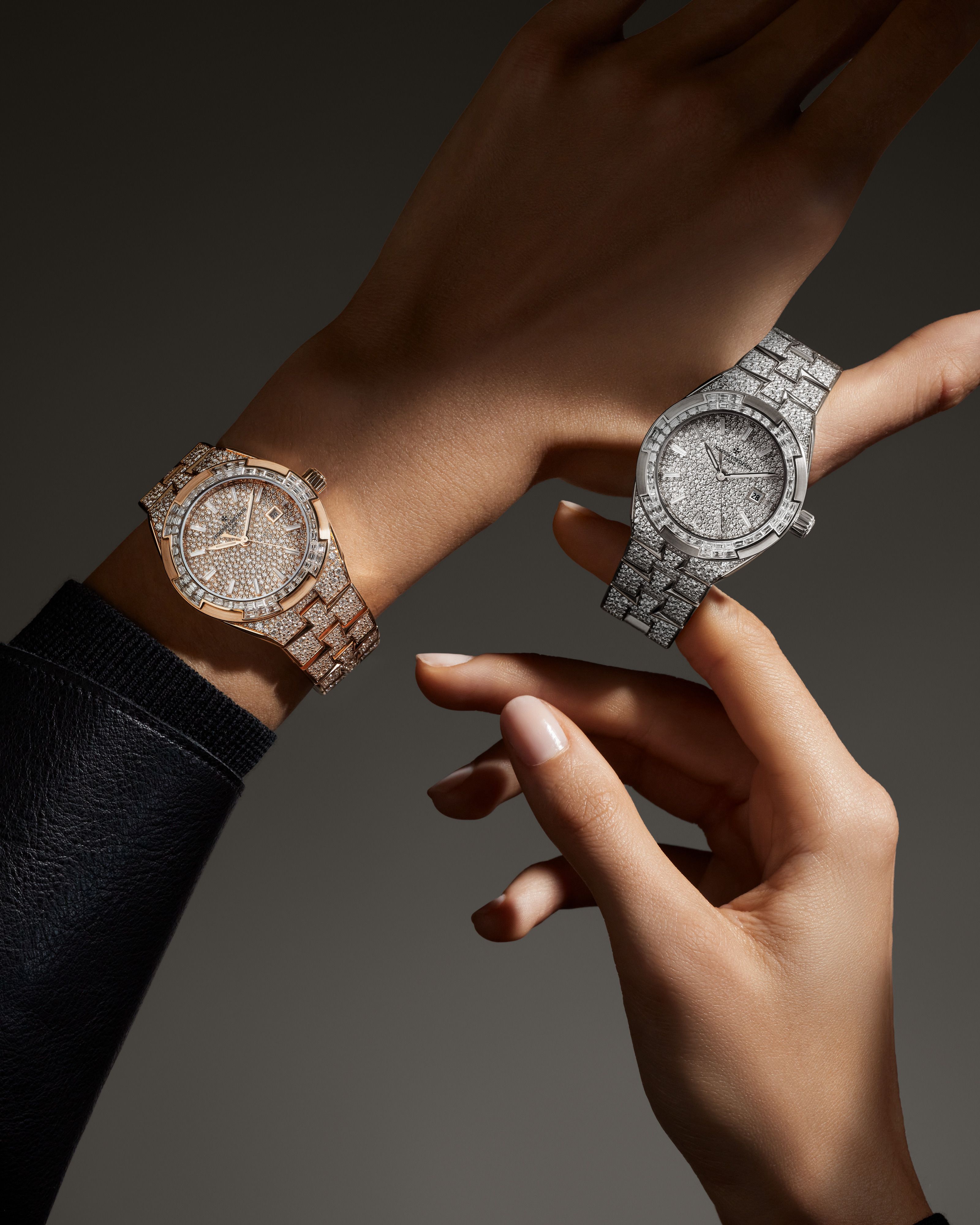
.JPG)
.jpg)
